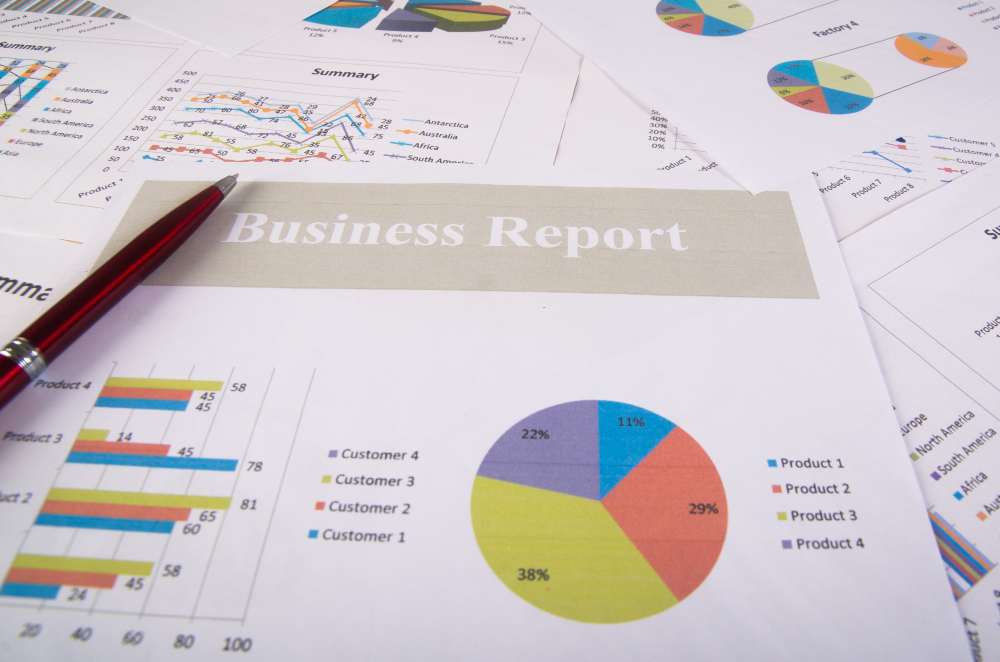

According to Intel Market Research, the global due diligence investigation market was valued at USD 12.65 billion in 2024 and is projected to grow to USD 20.66 billion by 2032, exhibiting a CAGR of 7.3% during the forecast period (2025–2032).
Competitive businesses leverage due diligence as a proven way to investigate, audit, and review all the relevant details associated with the target company before entering into a transaction.
Due diligence reports help businesses detect existing financial, legal, and operational issues to mitigate potential risks and safeguard investments and assets.
Today, we will dive deep into current practices of creating effective due diligence reports to streamline informed investment decisions:
- The meaning of a due diligence report
- Due diligence report purpose
- Due diligence report samples
- Due diligence team
- Due diligence report structure
- Preparing a due diligence report
- Pro tips on creating an effective due diligence report
- Recommended due diligence software.
Our comprehensive guide will help you save costs, time, and extra due diligence efforts.
What is a due diligence report?
A due diligence report is a summary of the due diligence process. Once a company considers partnering with a new business, its risk-based approach and compliance teams complete a due diligence process to research and uncover relevant information. All the findings are detailed in a due diligence report, including recommendations for proceeding with business transactions, like adjusting the deal structure and negotiating terms among other options.
What is the purpose of due diligence reports?
A due diligence report is a pivotal step for investors and businesses to:
- Secure more favorable transaction terms and pricing
- Detect, mitigate, and assess risks and liabilities
- Comply with legal and regulatory requirements and industry standards
- Minimize potential disputes and litigation
- Improve reputation and trustworthiness among stakeholders.
Due diligence report structure
A due diligence report covers multiple business areas from operational and strategic to legal and financial.
Here is a detailed breakdown of a due diligence structure:
| The executive summary | Summarizes the main findings and detects red flags like potential legal issues, competitive landscape, and revenue inconsistencies. |
| The company overview | Outlines the target company, covering corporate history, mission, strategic vision, core service and/or product descriptions, target markets, and operational milestones. |
| The due diligence purpose | Ensures that the report is comprehensive and meets the required standards. |
| Financial due diligence | Outlines the target company’s financial performance by highlighting income statements, balance sheets, cash flow statements, and related financial information like market trends, patterns, and fluctuations. The section also includes financial health and stability, tax returns, compliance status, and outstanding tax liabilities. |
| Legal due diligence | Examines the target company’s adherence to relevant laws and regulations, including labor, environmental, and tax legislation. The section is crucial to identify potential legal issues to mitigate adverse effects on the future transaction. |
| Operational due diligence | Appraises the target company’s business operations, including production, supply chain, logistics, and distribution. |
| Market due diligence | Assesses how the company positions its products, sets prices, advertises, and acquires customers. |
| Regulatory and environmental due diligence | Assesses the organization’s compliance with environmental sustainability and social accountability. |
| Insurance and risk management | Detects and analyzes potential operational, financial, reputational, and strategic risks. |
| Potential growth prospects | Include potential opportunities for organic growth, collaborations, partnerships, acquisitions, and best practices for optimizing growth potential. |
| Key findings and recommendations | Outline major outcomes of the due diligence process. |
| The Appendix | Includes contracts, market research reports, legal documents, financial models, and other relevant data. |
Customizing due diligence report
With no universally accepted standard for a due diligence report format and contents, every company customizes a due diligence report structure.
The structure and contents will vary depending on the type of due diligence you conduct, like for a merger or acquisition deal, a third party , or data privacy.
We recommend reviewing due diligence report templates. A deeper analysis of due diligence report samples will help you recognize all the potential risks and wider opportunities associated with an investment opportunity.
Sample due diligence report
Date: [Insert Date]
Prepared for: [Client/Company Name]
Prepared by: [Your Name/Your Company]
1. Executive Summary
This section provides a brief overview of the purpose of the due diligence report, including the entity being investigated, the scope of the report, and key findings.
2. Company Overview
- Name of the Company: [Company Name]
- Address: [Company Address]
- Date Established: [Year]
- Business Structure: [Private/Public, Corporation, LLC, etc.]
- Industry: [Industry Type]
Management Team:
- [Names and Titles of key management]
3. Financial Analysis
- Financial Statements Overview:
- Income Statement (Last 3 years)
- Balance Sheet (Last 3 years)
- Key Financial Ratios:
- Liquidity Ratios
- Profitability Ratios
- Leverage Ratios
- Revenue Streams: [Overview of primary sources of income]
- Financial Projections: [Expected financial performance over the next 3-5 years]
4. Legal Considerations
- Corporate Governance:
- Articles of Incorporation
- Bylaws
- Litigation History:
- Summary of any ongoing or past litigation
- Regulatory Compliance:
- Overview of compliance with applicable laws and regulations
5. Market Analysis
- Market Overview:
- Size of the market
- Key competitors
- SWOT Analysis: [Strengths, Weaknesses, Opportunities, Threats]
6. Operational Review
- Facilities: [Description of physical locations]
- Technology Infrastructure: [Overview of technology in use]
- Supply Chain Analysis: [Examination of vendors and supply chains]
7. Risks and Recommendations
- Identified Risks:
- Market Risks
- Operational Risks
- Financial Risks
- Recommendations:
- Strategies to mitigate identified risks
8. Conclusion
A summary reiterating the key findings and overall assessment of the target company.
9. Appendices
- Additional documents
- Detailed financial statements
- Market research data
Key due diligence actors and stages
Due diligence actors
Due diligence is performed either by a company’s internal team or a paid third-party group responsible for compiling a due diligence report.
Once a company performs due diligence without the support of a third-party, it will involve other internal teams and managers.
👁️🗨️ Pro tip: If you outsource due diligence to third party partners or broker dealers, ensure that subject matter experts, legal advisors, attorneys, and company stakeholders collaborate with the outsourcing party. A balanced approach incorporating internal collaboration makes the process thorough, targeted, and aligned with the organization’s due diligence objectives.
Due diligence stages
Due diligence requires much effort and varies depending on the types of due diligence reports. Here are the main steps and potential challenges parties may face during the process.
1. Preliminary assessment
Initially, a buyer or investor defines due diligence objectives and aspects. They need to review the target company’s publicly available information, like a website, news articles, annual reports, financial statements, share ownership, and shareholder value analysis. This way, they assess its attractiveness and identify potential concerns.
A potential challenge is to spot relevant and reliable data sources.
2. Confidentiality agreement
The parties sign a non-disclosure agreement (NDA) to protect the confidential information associated with the target company and guarantee confidentiality for any other sensitive information that may be shared during due diligence.
A potential challenge is to enforce confidentiality provisions among the parties involved during the due diligence process.
3. Due diligence planning
An investor forms a due diligence team, including legal professionals, financial advisors, operational specialists, and industry experts. They create a due diligence request list to outline the information they need for a due diligence review. A due diligence checklist includes contracts, the target company’s financial statements, employee records, and intellectual property documents, among other relevant documentation.
👁️🗨️ Pro Tip: Download a free due diligence checklist template online and see what to include in a due diligence report.
A potential challenge is aligning schedules and the availability of diverse experts and stakeholders.
4. Document reviews
When the target company subject to evaluation provides the requested documents, the buyer’s team reviews them in detail. This team may also visit the target company’s facilities to examine its operations, manufacturing processes, and related activities. With that, the buyer better understands the target’s inventory, assets, and operations.
The buyer’s team may also communicate with key employees, management, clients, and stakeholders to learn about the target company’s reputation, strategies, culture, relationships, and current challenges.
Depending on the nature of the business, the due diligence process is essential for the buyer to make an informed decision.
A potential challenge is managing the volume of documents effectively and verifying the authenticity and completeness of provided data.
5. Analysis, validation, and risk assessment
This step apprises various aspects of the target company’s activity to validate the accuracy and reliability of the obtained information, analyze the company’s valuation, and spot potential risks associated with the acquisition. It is an iterative process that involves cross-referencing data from multiple sources to comprehensively and precisely understand the target company’s operations.
A potential challenge is overcoming potential resistance or reluctance from the target company to provide access to sensitive information.
6. Documentation and report preparation
After assessing risks, a due diligence global team creates a report highlighting key risks, opportunities, and recommendations. The report also includes contracts, financial records, and all other evidence to support the findings.
A potential challenge is ensuring data accuracy and reliability obtained from various sources.
7. Decision-making and negotiation
A buyer or investor carefully evaluates the due diligence report to make an informed decision about the deal. The mergers and acquisitions (M&A) buy-side may opt to negotiate the purchase price or other terms. If due diligence uncovers issues, the parties may cancel a potential deal.
A potential challenge is compiling and organizing findings from various sources into a coherent report.
8. Deal closure
Once both parties agree on the terms, they finalize the legal agreements and close the transaction.
Now that you know the main steps of creating a comprehensive due diligence report, explore a dedicated online solution to streamline the due diligence procedure.
Five tips to create due diligence reports
| Consistent format | Use a uniform format in the report to aid readability and enable easy data comparison. A standardized structure helps the reader navigate seamlessly and focus on the content instead of being distracted by changing layouts. |
| Clear language | Sound due diligence reports are clear and straightforward to make the content accessible to all readers, regardless of their expertise. |
| Visual aids | Graphs, charts, and tables improve data presentation by grasping large chunks of information at ease. |
| Explanations | To make the due diligence report accessible to a broader audience, including those without technical backgrounds, explain unfamiliar terms in simple language. |
| A well-organized executive summary | An executive summary should be well-structured and accurately summarize findings. |
Software for due diligence reports
Due diligence software provides a specialized online platform that automates due diligence workflows:
- Secure data storage
- Protected file sharing
- Collaboration tools
- Reporting features.
| Secure data storage | Intuitive document organization features allow users to categorize, tag, and index documents according to the structure of the due diligence report. |
| Data security | Ideals provide protected document storage with advanced encryption and access controls to protect sensitive information. |
| Reporting | Ideals allow users to generate customizable reports on user activity, document access, and other metrics. |
Due diligence questionnaire
A due diligence questionnaire is a proven way to gather information during an investigation.
Once part of a deal, you may share the questionnaire with the other party so they can answer questions that will help you write a robust due diligence report.
Depending on the transaction type, you may send the questionnaire to your partners, potential buyers, or suppliers, indicating specific questions for each group.
Here’s a sample due diligence questionnaire
Conclusion
While due diligence takes much effort and is time-consuming, it is critical for business relationship planning.
Our guide provides time-tested tips and due diligence solutions to streamline the process of due diligence reporting.
Recommended for you



